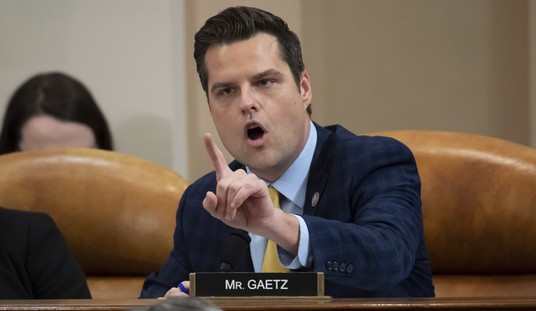For more than two centuries, the political left has been preoccupied with the fate of criminals, often while ignoring or downplaying the fate of the victims of those criminals.
So it is hardly surprising that a recent New York Times editorial has returned to a familiar theme among those on the left, on both sides of the Atlantic, with its lament that "incarceration rates have continued to rise while crime rates have fallen."
Back in 1997, New York Times writer Fox Butterfield expressed the same lament under the headline, "Crime Keeps on Falling, But Prisons Keep on Filling." Then, as now, liberals seemed to find it puzzling that crime rates go down when more criminals are put behind bars.
Nor is it surprising that the left uses an old and irrelevant comparison -- between the cost of keeping a criminal behind bars versus the cost of higher education. According to the Times, "Vermont, Connecticut, Delaware, Michigan, and Oregon devote as much or more to corrections as they do to higher education."
The relevant comparison would be between the cost of keeping a criminal behind bars and the cost of letting him loose in society. But neither the New York Times nor others on the left show any interest in that comparison.
In Britain, the total cost of the prison system per year was found to be £1.9 billion, while the financial cost alone of the crimes committed per year by criminals was estimated at £60 billion.
The big difference between the two kinds of costs is not just in their amounts. The cost of locking up criminals has to be paid out of government budgets that politicians would prefer to spend on giveaway programs that are more likely to get them re-elected. But the far higher costs of letting criminals loose is paid by the general public in both money and in being subjected to violence.
Recommended
The net result is that both politicians and ideologues of the left are forever pushing "alternatives to incarceration." These include programs with lovely names like "community supervision" and high-tech stuff like electronic devices to keep track of released criminals' locations.
Just how do you "supervise" a criminal who is turned loose in the community? Assigning someone to be with him, one on one and 24/7, would probably be a lot more expensive than locking him up.
But of course no one is proposing any such thing. Having the released criminal reporting to some official from time to time may be enough to allow the soothing word "supervision" to be used. But it hardly restricts what a criminal does with the other nine-tenths of his time when he is not reporting.
Electronic devices work only when they are being used. Even when they are being used 24/7, they tell you only where the criminal is, not what he is doing.
Those released criminals who don't even want that much restriction can of course remove the device and become an escapee, with far less trouble or risk than is required to escape from prison.
One of the most insidious aspects of "alternatives to incarceration" programs is that those who control such programs often control also the statistical and other information that would be needed to assess the actual consequences of these programs.
They not only control what information is released but to whom it will be released.
When officials whose careers are on the line can choose between researchers who view incarceration as being "mean-spirited" toward criminals and other researchers who are much less sympathetic to criminals, who do you think is going to get access to the data?
A study of the treatment of criminals in Britain -- "A Land Fit for Criminals" by David Fraser -- has several chapters on the games that are played with statistics, in order to make "alternatives to incarceration" programs look successful, even when they are failing abysmally, with tragic results for the public.
Britain has gone much further down the road that the New York Times is urging us to follow. In the process, Britain has gone from being one of the most law-abiding nations on earth to overtaking the United States in most categories of crime.

























Join the conversation as a VIP Member